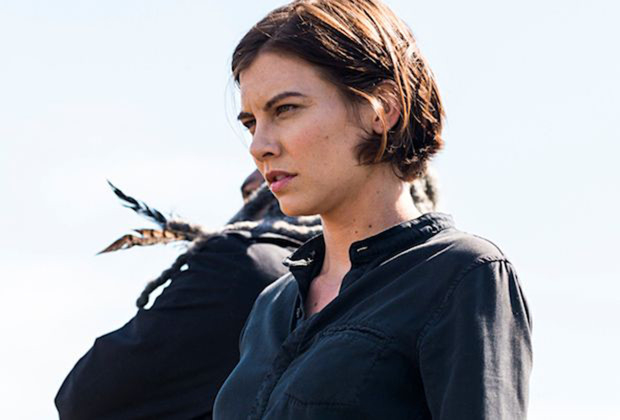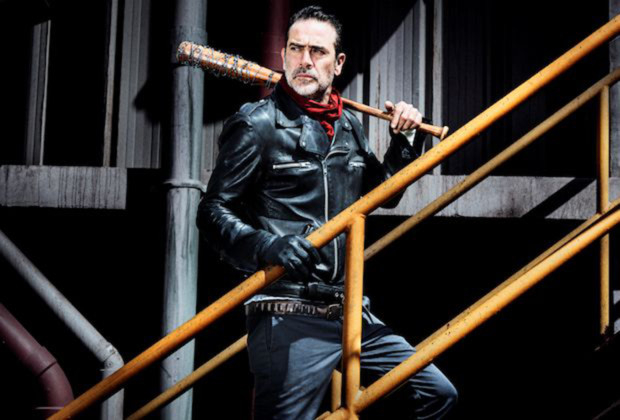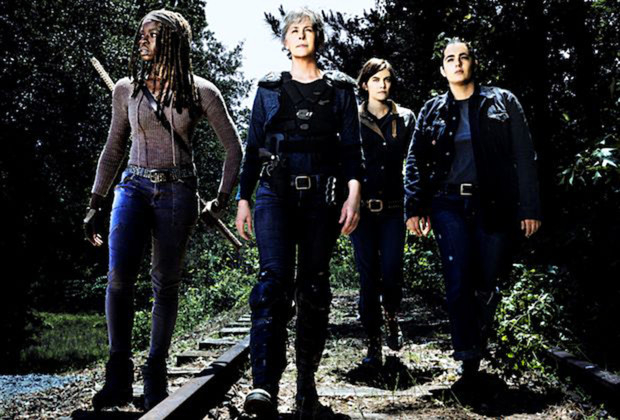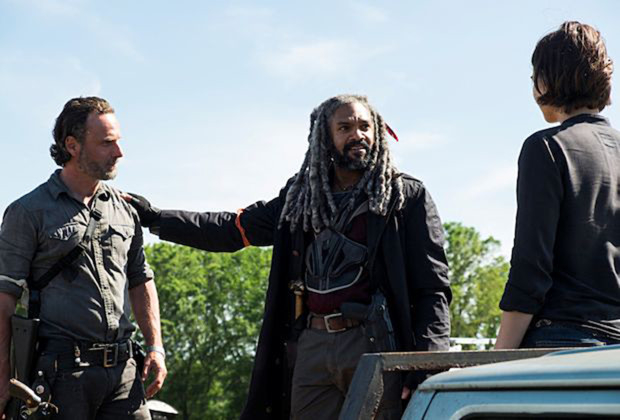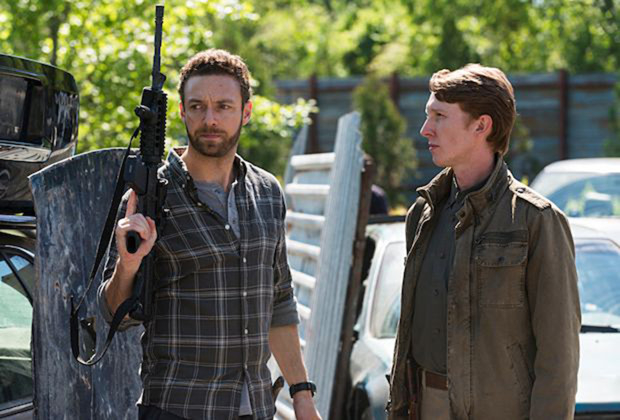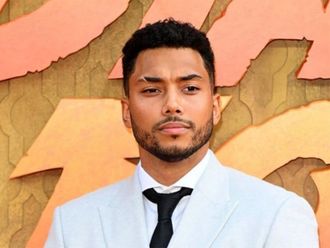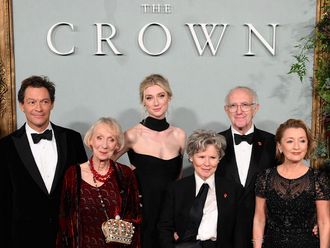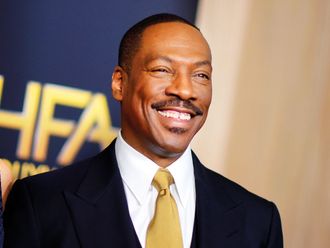
For seven seasons, The Walking Dead has explored a world where the dead roam the earth while the living seek safety — from other humans as much as from the zombies trying to tear into their flesh.
There are characters whose faith is tested but find their grit and fierceness. There are those who are kissups and latch themselves onto leaders, their will to survive stronger than their pride. Then there are those who seize a newfound power to terrorise and bully. Through it all, it’s often difficult to discern the difference between who’s good and who’s evil, something that evolves and can change from moment to moment.
And now, as the show launched its season eight kickoff with its 100th episode on Sunday, the characters are on the verge of war, a battle pitting character Rick Grimes and his band of loyalists against Negan and the Saviours, mixed in with a few other communities whose allegiances sometimes shift without warning.
BEHIND THE SCENES
The main filming location is on a sprawling lot tucked behind this small south Georgia town where most of this new world has sprouted: Raleigh Studios, a constantly evolving set on 56 hectares where all sorts of imaginary communities have been created from scratch.
The Heap — an actual mound of trash filled with all sorts of debris and cars no newer than 2010 (the year the world is said to have died) — was created in just three weeks to serve as the domain for Jadis (played by Pollyanna McIntosh), who speaks in an odd clipped form of English and switches allegiances as fast as character Michonne can lop off a head with her Katana.
The Hilltop, ruled over by drunkard and chauvinist Gregory (played by Xander Berkeley), took nearly four months to create, its 18th century architecture brick exterior concealing an interior that is basically a shell, devoid of any walls. Alexandria, the gated community supposedly in northern Virginia, is an actual subdivision that four real families call home and have to stay clear of the film crews that flock there six months out of the year.
The first season was shot largely in Atlanta. By the second season, Raleigh Studios in Senoia — about an hour south of Atlanta — had been created in this town of about 4,000.
Not only does it allow the show to create and keep the communities that make up The Walking Dead, but it can be constantly reinvented. The spot where Gabriel’s church once stood? It was torn down and became the dirt circle where season six ended with Rick and his crew kneeling before Negan, the spot where beloved characters Glenn and Abraham were slain at the end of Negan’s barbed-wire covered bat.
And now? It remains vacant. “This is pretty much hallowed ground,” said Tom Luse, the show’s executive producer. It was a tough scene to shoot, he said, and it was even tougher to lose not only two beloved characters but two actors among a crew that considers itself tight-knit.
“I don’t know if we’ll shoot here again,” Luse said, adding later: “This is a shrine.”
Virtually everything is shot on the site. One exception: The Kingdom, which is shot at Tyler Perry’s studios at nearby Fort McPherson.
One of the biggest advantages and challenges? The grass and shrubs. “Greens help hide a million sins,” Luse said. But they also have to ensure it doesn’t get trimmed or mowed too often. “We have to constantly recreate that dead look.”
COMIC LORE
The show is based on comics created by writer Robert Kirkman and artist Tony Moore. The comics are still going strong with more than 165 issues so far. In some cases, the TV show mirrors how it plays out in the comics; in other instances it veers off on its own course. Even a few characters not seen in the comics find their way on the screen, including Daryl Dixon (played by actor Norman Reedus), a crossbow-wielding character who has proved to be one of the show’s most popular.
Gale Anne Hurd, an executive producer, attributes much of the cast’s camaraderie to Andrew Lincoln, who plays lead character Grimes, a sheriff who emerged from a coma to find the zombie apocalypse has turned the world upside down.
“We work and live in a bubble. And it’s great that’s the case because no one has changed,” Hurd said. “That’s what is special about this show. Not one person from the [original] cast all of a sudden thinks they’re some sort of superstar and has a big trailer or an entourage. They’re still in two banger trailers.”
When did it start to dawn on them when the show would become a huge success and endure? For Hurd, it was fairly early: season two. The characters had escaped to a sprawling farm outside of Atlanta. There was comfort, apparent safety and places nearby to raid for weapons, food and other assorted basics.
“The second season was one in which with people arguably could say OK, it slowed down, they’re at the farm, it was focused significantly on character development and the fandom grew,” Hurd said. “And in my mind knowing that there was action to come and there were bigger worlds, more worlds, more characters that if we were building viewers in Season 2 that it was the kind of trajectory that made for a show that could endure.”
Greg Nicotero, special effects guru who has not only made his mark on the show by creating the zombies who lurch and prowl the world but also is co-executive producer and occasional-director, called this season’s premier its most propulsive — a word used repeatedly by the cast and crew as they began taping season eight.
Season seven was known for segmented episodes that narrowly focused on one character or community. It was described as a tough season to get through, the actors missing the chance to interact with a variety of colleagues and feeling isolated. Cast and crew say the feel for season eight is different. The pace will be accelerated and even the way it’s filmed will feel different, though no one would even come close to betraying those nuggets fans crave to divine which characters might die and how the war will play out.
But they do note that there will be moments that pay homage to all the previous seasons — and to their loyal fans.
“There’s gonna be some moments that people who have watched the show from the beginning will see and be like, ‘Oh, OK, I see what they’re doing here’ by paying tributes to specific moments over the last seven years,” Nicotero said.
—————
Fast facts about the zombie land
1. Raleigh Studios in Senoia, where most of The Walking Dead is filmed, is a 56 hectare spread that is used exclusively by the show. Most of the different communities are all created and filmed on the property except for The Kingdom, which is filmed at the former Fort McPherson military base in Atlanta, where Tyler Perry has studio space.
2. The fictional town of Alexandria, a gated community supposedly set outside of Washington, DC, is a real neighbourhood in Senoia. Just four families live there, while the rest of the homes are vacant and used as mini sets where some of the characters live. The real-life residents have signed non-disclosure agreements and have restrictions on when they can come and go and when they can have visitors so it’s not disruptive to filming.
3. The actors who play zombies on the show use conditioner and KY Jelly to give their hair an unwashed, dishevelled appearance.
4. The production meeting room is a small theatre with a conference table at the front. The room’s walls are lined with photos of each of the actors whose characters have died. “Our Grateful Dead” now occupies two walls. Whenever one of the characters dies, the actors — whether they’re in the scene or not — make a point of watching it, paying tribute to yet another fallen comrade.
5. The show’s props crew is creating a line of kid-friendly toys for a show noted for its violence and gruesomeness. — AP



